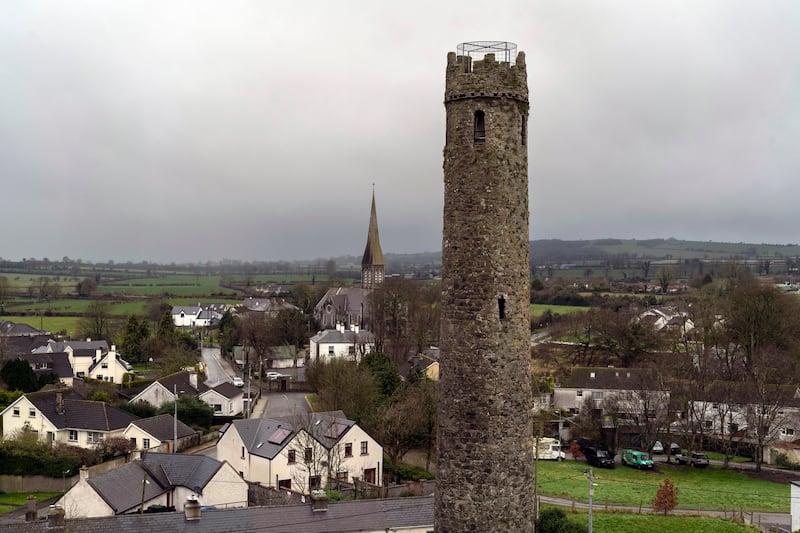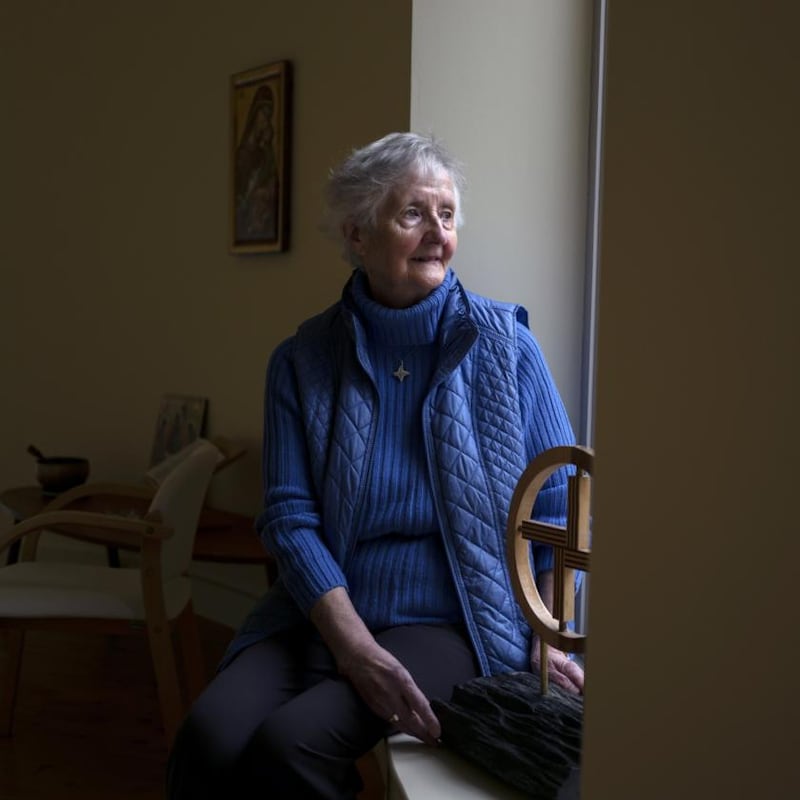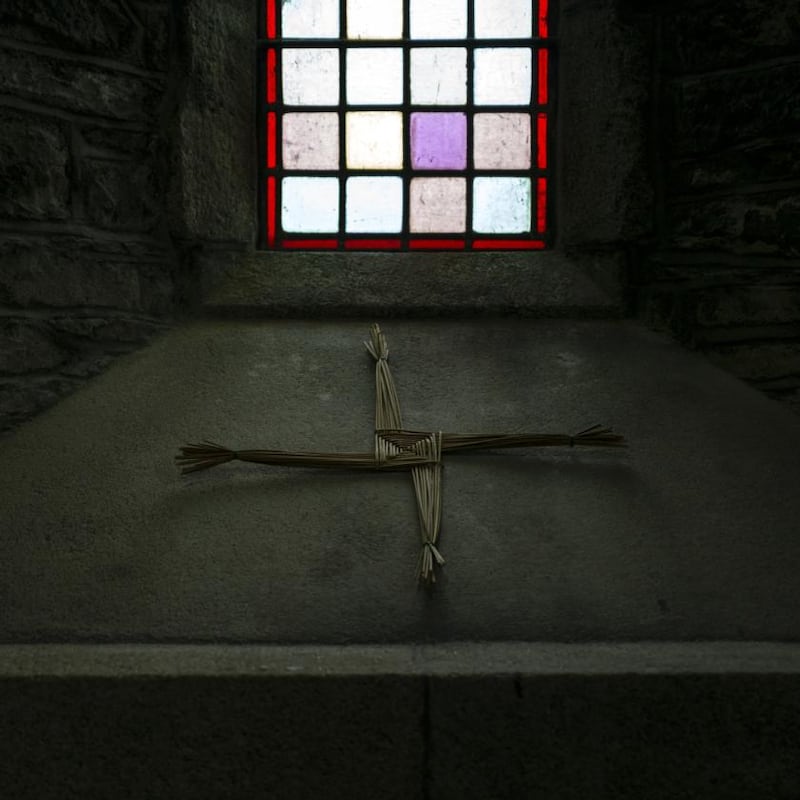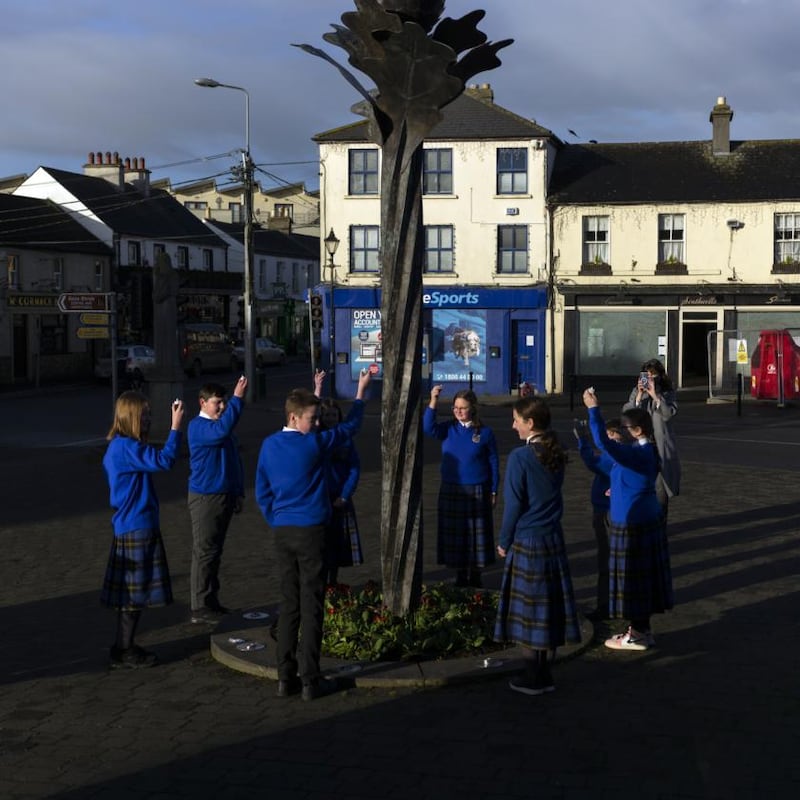Around the year 480, as legend has it, a freed slave named Brigid founded a convent under an oak in the east of Ireland. To feed her followers, she asked the King of Leinster, who ruled the area, for a grant of land.
When the pagan king refused, she asked him to give her as much land as her cloak would cover. Thinking she was joking, he agreed. But when Brigid threw her cloak on the ground, it spread across 5,000 acres – creating the Curragh plains, which stretch beside the religious settlement she founded at Kildare.
A millennium and a half later, a renewed cult of St Brigid is thriving in Co Kildare, even at a time when the Roman Catholic church is in retreat, weakened by clerical sex abuse scandals, growing secularism and — Catholic feminists say — by its refusal, despite a collapse in the numbers of its all-male priesthood, to give equal status to women.
Much of the revitalised interest is the result of the Brigidines’ emphasis on nature, ecology and healing, and their shift away from the patriarchal faith of traditional Catholicism.

"People are coming in groups from all around the world — interfaith groups, no faith groups, goddess groups, Buddhist monks, all sorts of people," said Sister Rita Minehan, one of three nuns of the Brigidine Order who in 2015 opened Solas Bhride (the Light of Brigid), a hermitage and prayer centre on the outskirts of Kildare town. "Her legacy is appealing to people again today, I think because of her alignment with the earth and because our planet is in danger."
Brigid's legend spread far and wide in northwest Europe centuries ago, taken by early Irish missionaries as they reestablished Christianity after the fall of the Roman Empire. Variations on her name – Brigitte, Breda, Bride, Birgit – are still found wherever their teachings took hold.
Pilgrims from across Ireland long came to St Brigid’s Well, a spring in a marsh near Kildare town, to recite formal Catholic prayers and seek the saint’s blessing – especially around her feast day, February 1st.

But as the cult of Brigid has changed in recent years, and as more people have flocked to Kildare from around the world, so too has the pattern of prayer.
At dusk on the eve of St Brigid's Day this year, in place of muttered rosaries, several hundred worshippers, mostly women, lit candles from a central flame by the well. They watched as Angela Seoighe, a retired local teacher, hand-wove a giant St Brigid's Cross – a twist of rushes or straw that many households still hang every year to protect against illness and fire. Another nun from Solas Bhride, Sister Phil O'Shea, recited a new type of prayer.
“The earth is waking from its winter sleep,” she intoned. “Just listen – Brigid brings the spring.”
Rita said that conservative visitors to Solas Bhride, especially from the United States, are sometimes taken aback by the shift in how Brigid is venerated.
“Some of them say, are you Catholic nuns? Does the Pope know about you?” she said, amused. “And some of them come to us afterwards and say they are afraid to say amongst themselves what we are saying aloud.”

Liz Pickard, an office worker from Denver in the US, was raised Episcopalian but discovered the story of Brigid on an earlier visit to Ireland. She came to Solas Bhride this year for a weeklong stay in its hermitage.
“I was searching for meaning, and she gives so much meaning,” Pickard said. “Right now, if you go down a certain road with religion, there’s a lot of pain caused by these people, but with Brigid, I think there’s a lot of kindness and a lot of service and courage.”
Two sisters, Georgina O Briain and Caragh Lawlor, sat in the calm of Solas Bhride's central prayer space on St Brigid's Day, quietly weaving rush crosses. They had come from Co Laois to pray for their mother, who was gravely ill.
“Brigid was both Christian and pagan, a mix of the two, and while I’m not very religious, I am very spiritual, and she brings it together for me,” O Briain said.
“There’s an old saying: There’s room under Brigid’s cloak for everyone,” Lawlor said.
Brigid has always sat at the intersection of legend and history, of folk religion and institutional Catholicism. She shares her name and her attributes with a much older pagan deity, the goddess of healing, wisdom, domestic animals and blacksmithing, who was celebrated on one of the four great Celtic holy days, Imbolc, marking the end of winter. Imbolc falls on February 1st – St Brigid's feast day.
Mario Corrigan, a local historian, said that the first writings about Brigid date from a century after her time. By then, the pagan and Christian figures were already fused.

Tellingly, Brigid’s Christian nuns maintained a pagan-style fire shrine on the grounds of her abbey, even after the Anglo-Norman invasion of Ireland in the 12th century, in which the English monarchy imposed strict Roman Catholic doctrine on the independent-minded Celtic church of Brigid, Patrick and Columba – Irelands’ trio of patron saints. It was only in the 16th century – when King Henry VIII abolished convents and monasteries so he could make himself head of the Protestant church in Britain and Ireland – that the fire was quenched.
Today, the reputed remains of that fire shrine, a broken Celtic cross and a 105-foot stone round tower, built in the age of pillaging Vikings, are the most visible remains of the pre-Reformation settlement. But the Church of Ireland maintains a restored stone cathedral on the site of the old church, still bearing Brigid's name.
The dean of the cathedral, the Reverend Tim Wright, said that with interest in Brigid increasing, the church would work with the local community to develop the ancient site, just off Kildare town's charming main square, as a religious and tourist attraction.

A local committee is planning a major celebration of the saint for 2024, the 1,500th anniversary of her reputed death. And the Government announced in January that starting next year, there will be a new annual holiday, on or near February 1st, to mark both Imbolc and St Brigid’s Day. It will be, the Government said, the first Irish public holiday to honour a woman.
For some Catholic feminists, the new interest in Brigid reflects the liberalising Second Vatican Council in the 1960s, which appeared to signal an end to the subservient and cloistered role of women in the church.
"Many nuns, like the Brigidines, became much more engaged with ecological and social issues, and they are also in touch with feminist groups around the world," said Mary Condren, director of Woman Spirit Ireland who teaches at the Centre for Gender and Women's Studies at Trinity College Dublin.
Margaret Hebblethwaite, a leading English writer on Catholic matters, attended this year's vigil at St Brigid's Well.

While she had heard the name of St Brigid as a child, Hebblethwaite had only recently learned that, unusually, Brigid and her female successors governed not only nuns but male monks as well. Moreover, it is believed that Brigid, despite being a woman, was ordained as a bishop.
“She is such a model, so badly needed by the church of today because of the issues of gender equality,” Hebblethwaite said.
In many other Christian churches, those issues have already been addressed. The Church of Ireland voted in 1990 to permit women to become priests, and in 2013, it appointed its first female bishop. In December that year, the Most Reverend Pat Storey became bishop of Meath and Kildare – possibly the first woman to hold such a title since Brigid herself. – This article originally appeared in the New York Times. It was amended on March 23rd to clarify Dr Condren's title.



















